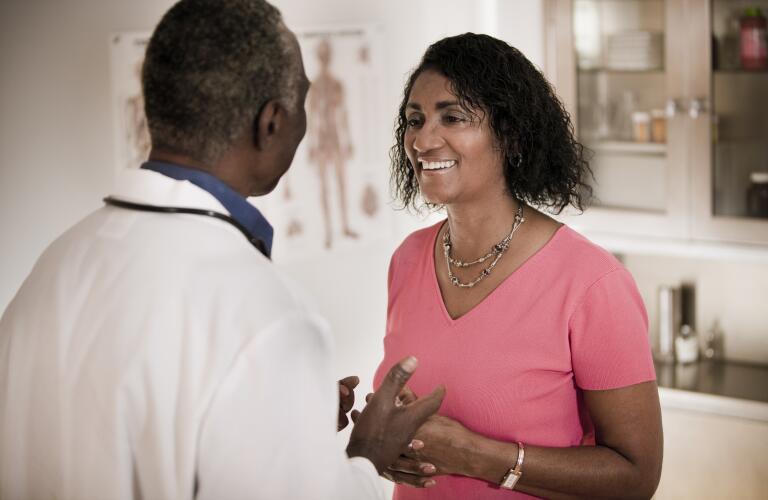
I’ve been an Ob/Gyn for about 30 years, treating patients with uterine fibroids to help them find relief and stay healthy. When a patient comes in to see me, we first educate them about what uterine fibroids look like, where they’re located, and how that affects their symptoms. We perform ultrasounds and other tests, and listen carefully as they describe their symptoms in order to understand how fibroids are impacting their lives. Based on these assessments, we’ll choose an initial therapy. Everyone’s experience with fibroids is different, but there are several things every patient should keep in mind.
1. Find a doctor who can offer you less invasive treatment methods.
When I began my career as an Ob/Gyn 30 years ago, the most common treatment for fibroids was hysterectomy. This operation removes the uterus, thus removing uterine fibroids. But it also removes a woman’s ability to conceive and have children. Fortunately, today we have many more options that are less invasive and preserve fertility. From medications to contraceptive devices to interventional radiology procedures, your symptoms can likely be reduced or resolved without you having to face losing your ability to have children. If your fibroids doctor hasn’t given you a wide array of treatment options, find someone who will.
2. Work with your doctor to define what success looks like for you.
About 25% of women with fibroids will experience symptoms; most often, people come to see me because their menstrual bleeding is heavy, their period pain is significant, or their fibroids are causing pelvic pressure. Because symptoms vary, our treatment methods vary as well, and everyone’s definition of success is different. The general goal of fibroids treatment is to reduce or eliminate the symptoms that brought the patient in, but it’s more complex than that. Some patients want to never have a period again. Some want their bleeding to be reduced by half. Some want to get to a point where they don’t need to change pads in the middle of the night or miss work due to painful cramps. I consider treatment successful when it meets the needs of the patient; it’s not limited to some broad clinical achievement. It’s about improving quality of life for each patient so they’re satisfied, healthy, and can live their normal lives.
3. Stay positive and don’t settle.
We have a lot of tools in our toolbox these days when it comes to treating fibroids. I encourage patients to stay positive and be patient; it may take a few tries to find a therapy that works for you, but eventually we will get there. It’s common for patients to try multiple treatments before they reach the results they want. If your treatment isn’t giving you an adequate response or the relief you’re looking for, you shouldn’t settle. With the variety of treatment options that are available, women shouldn’t have to suffer.
4. Track your symptoms.
One problem with fibroids is they’re not always obvious. You can’t feel them until they get really big, so you may not be aware of the subtle ways they’re impacting your body over time. Even a doctor can examine you and not necessarily know what’s happening with your fibroids. That’s why it’s important to pay close attention to your symptoms and seek care as soon as you notice any change. Track your symptoms and your menstrual cycle, and share the details with your doctor so you both understand your typical cycle and how treatments you try affect you. You might keep a note of how many pads or tampons you need, or how often you change them. You can rate your period pain from 1 to 10 and see how it changes over time. Since fibroids can significantly impact quality of life, the patient plays a key role in determining how well treatments are working.
Treating uterine fibroids is very much a collaboration between a patient and their physician. I consider the women I treat to be a partner in their care. Working together, we will find the strategy that meets their goals and brings relief.







